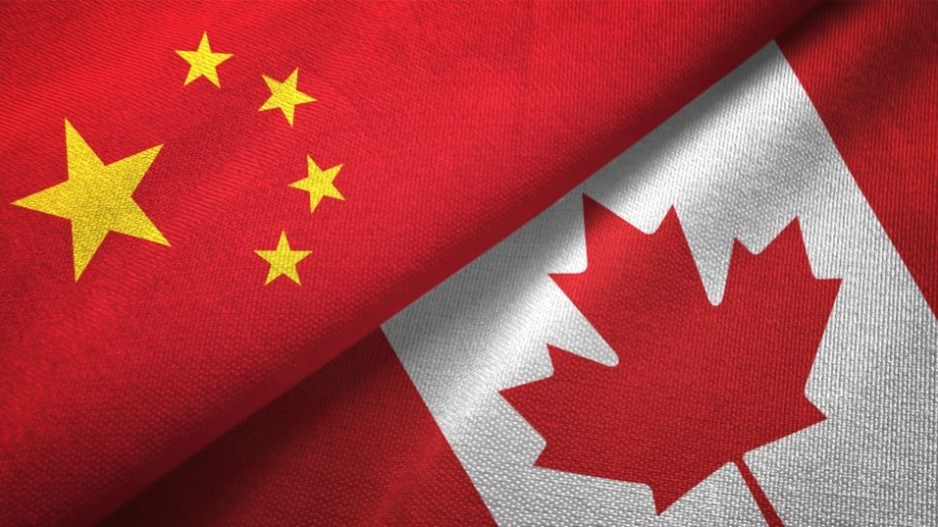This article was originally published on The Conversation, an independent and nonprofit source of news, analysis and commentary from academic experts. Disclosure information is available on the original site.
___
Author: Michaela Pedersen-Macnab, PhD Candidate, Political Science, University of Toronto
Canadian Foreign Affairs Minister Mélanie Joly recently met with her Chinese counterpart, Wang Yi, marking the first official visit following a multi-year diplomatic crisis.
The resumption of ministerial contact has led some commentators to call for a return to regular bilateral diplomacy between Canada and China since “glimpses of a rainbow appear to be on the horizon” for the relationship.
Others have noted that Canadians are still concerned about foreign interference, so icy public opinion makes re-engagement with China politically challenging.
Yet few seem to have noticed that there is no going back: Canada formally ended its longstanding engagement with China back in November 2022 with the publication of its Indo Pacific Strategy.
Canada quietly cancelled most of its high-level dialogues and bilateral engagement mechanisms with China and implemented a review process that makes creating new methods of engagement exceedingly difficult.
Failures of engagement
Ending engagement makes sense. China’s penchant for coercive diplomacy vividly illustrated the failures of an engagement policy for Canada — as well as for other western democracies like Australia and Norway.
In Canada’s case, China arbitrarily detained Canadian citizens Michael Kovrig and Michael Spavor in December 2018, using the Canadians as bargaining chips to pressure Canada into releasing Huawei CFO Meng Wanzhou after she was arrested by Canadian authorities acting on an American arrest warrant.
Yet there were also earlier signs diplomatic engagement was failing, including Chinese crackdowns on freedom of expression; China’s rejection of the 2016 South China Sea Arbitration; its illiberal trade practices; human rights abuses in the Xinjiang Uyghur Autonomous Region; and the end to presidential term limits. These and other events should have indicated that nearly four decades of attempting to engage meaningfully with China and encourage it to embrace the rules-based international order had failed.
Yet curiously, even throughout years of diplomatic tensions between Canada and China, Canadian officials made efforts to re-establish engagement and shield bilateral engagement mechanisms, including trade deals, from what Canada initially framed as a “consular dispute.”
So why did it take so long for Canada to end its policy of engagement? Why are so many other western democracies still committed to engagement with China? And how did Canada finally end a policy that had been in place for nearly four decades?
Ending engagement is difficult
Engagement policies are foreign policy strategies that prioritize the creation of platforms, dialogues and other mechanisms to foster diplomatic interaction at all levels of governance and on various issues.
Canada’s engagement policy with China began in the 1980s as a development strategy and effort to influence the trajectory of Chinese political and economic systems. Engagement was maintained — by both Conservative and Liberal governments to varying degrees — for almost four decades.
Drawing on confidential interviews with senior Canadian diplomats and policymakers, new open-access academic research from the University of Toronto finds that, once adopted, engagement policies are hard to quit.
Canada’s engagement policy with China was maintained, despite evidence that it wasn’t achieving its goals, because engagement is tough to measure. The policy was never critically evaluated or tested. Over time, the pursuit of engagement became a habit rather than a conscious policy choice.
While engagement policies are particularly hard to reverse, other policies can also fall into this trap. Any foreign policy strategy that is hard to measure can eventually become resistant to its own failures.
How to end engagement
Once a policy becomes a habit within the public service, it is difficult to change. While some policymakers recognized that engagement with China wasn’t working, they were unable to challenge the policy because its logic seemed self-evident and obvious.
But in mid-2020, two channels for high-level policy debate were created that made change possible: the creation of an interdepartmental review process and the establishment of a regular deputy ministers meeting on China.
These platforms empowered policymakers to challenge the logic of engagement, experiment with new policy ideas, elevate those new ideas to the most powerful decision-makers and generate interdepartmental consensus on a new policy direction.
Working relationship necessary
Complete estrangement from China would, of course, be a mistake. China’s global impact, influence, military and economic might means a working relationship and clear-eyed strategy on China are in Canada’s best interests and can mutually benefit both countries.
Engagement might still have a place within this broader strategy: constructive dialogue on issues of common interest such as biodiversity protection and climate change governance must continue. Canada may also still find value in engaging with China on issues of profound disagreement, like human rights and foreign interference, to hold Chinese authorities accountable when their behaviour falls short of China’s obligations under international law.
But engagement cannot be pursued simply for its own sake. High-level dialogue and other means of engagement must serve precise and concretely defined policy objectives. In other words, engagement should be a strategic and considered choice, and not just pursued out of habit.
___
Michaela Pedersen-Macnab does not work for, consult, own shares in or receive funding from any company or organisation that would benefit from this article, and has disclosed no relevant affiliations beyond their academic appointment.
___
This article is republished from The Conversation under a Creative Commons license. Disclosure information is available on the original site. Read the original article: https://theconversation.com/how-canada-finally-broke-its-longtime-habit-of-diplomatic-engagement-with-china-232867
Michaela Pedersen-Macnab, PhD Candidate, Political Science, University of Toronto, The Conversation




